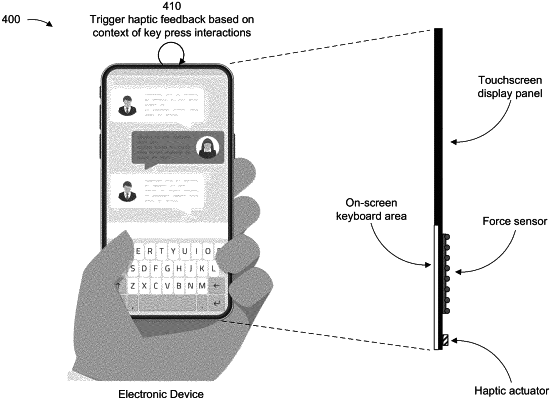| CPC G06F 3/016 (2013.01) [G06F 3/0414 (2013.01); G06F 3/04842 (2013.01); G06F 3/04886 (2013.01); G06F 2203/014 (2013.01); G06F 2203/04105 (2013.01)] | 30 Claims |

|
1. A method performed by an electronic device, comprising:
displaying a keyboard user interface on a touchscreen display panel;
detecting a key press interaction with the keyboard user interface; and
triggering one or more haptic actuators to generate a vibration waveform associated with a haptic pattern that is based at least in part on a location of the key press interaction and a force value of the key press interaction at the location, wherein the vibration waveform is based at least in part on:
whether the location of the key press interaction is on a key-center region, on a key-edge region, or on a boundary region between keys,
whether the force value is within a range, above the range, or below the range,
whether the key press interaction is associated a key having a standard keycap size or a non-standard keycap size, or
whether the key press interaction is associated with a force level that indicates a final character of a word.
|